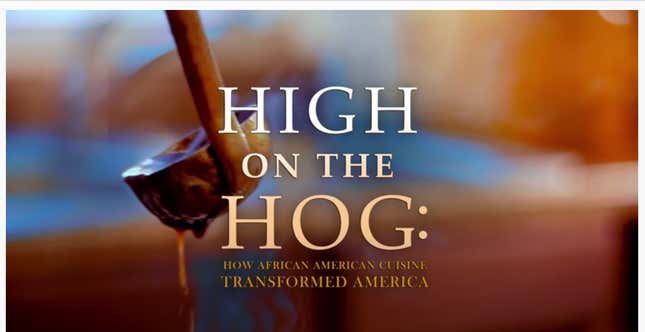
For as long I can remember, gumbo has been the meal of choice every year, every Christmas.
Thanks to my Mama’s Louisiana upbringing, her gumbo has often brought all the folks to our yard and kitchen table over the years because it’s just that damn good. However, no matter how many times she’s made it, there’s always been a point of contention between me and her that never ceases to arise.
Okra or no okra?
Now before you get on me, let me just say—my mother ALWAYS puts okra in her gumbo. Lots of it actually, much to my displeasure. And because she knows how much I despise the texture of okra, she often separates “my batch” of gumbo from the rest leaving her and whoever else that decided to show up to our house to enjoy it in all of its okra-ey goodness.
I do not like okra. But after watching the new Netflix limited series High on the Hog: A Culinary Journey From Africa to America, I definitely have more reverence and respect for okra specifically, and the culinary history and excellence of Black folks overall. I’ll explain:
Over the course of four episodes, writer, chef, and former sommelier Stephen Satterfield takes us on a journey to discover the inextricable and undeniable link between American food history and its African roots. Hitting major food hotspots such as Houston, Brooklyn, Charleston, S.C. and more, Satterfield’s first and arguably most impactful stop happens in episode one in the country of Benin in West Africa.
Accompanied by culinary historian and cookbook author Jessica B. Harris, (who authored the book that this series is based on) the two embark on a deep, emotional tour of the city and the particular foods that were brought over from the coast of Africa to America, including black-eyed peas, yams, watermelon, rice, and, wouldn’t you know it—okra.
“It’s African because it made the voyage with us,” Satterfield explains. To which Harris adds, “ It did. But it’s African also because it originated here and then we brought it to the new world. It’s the connector.”
Another connector that brought unexpected and overwhelming emotions for both Satterfield and myself was when Stephen and Harris visited the barracoons, where the enslaved Africans were held and separated before they were sent across the waters. I’ve always suspected that going back to Africa, specifically the place where your ancestors were stripped from all that they’ve known, would be a soul-stirring experience, but what I didn’t expect was to feel all the feels and emotions from the comfort of my own home.
What followed in the next three episodes were a series of beautiful, awe-inspiring yet sometimes disheartening deep dives into the connections and contributions African-Americans made in designing and defining what we now know as simply American cuisine and its culinary history. Our legacy spans from Texas barbeque and its ties to America’s first cowboys (who were Blackity-black, in case you didn’t know), to the importance of preserving and protecting the land and legacy of Black farmers, the link between Black cooks and fine dining, to the small yet mighty influence of the Gullah people and more. Hearing the stories and seeing how the interrelatedness of Black people and “American” cuisine played out in this series not only left me with a deeper sense of appreciation for our innate creativity, but also a profound sense of pride in our ingenuity, resilience, and persistent ability to create something excellent out of scraps, both figuratively and literally.
And while it still may not be enough to change my opinion on whether or not okra belongs in gumbo (which, fun fact is actually how you say “okra” in France), what has evolved is my admiration and understanding of Black culture and what all we have and will continue to bring to the table. And that, in and of itself, is perhaps the most satisfying of all.
High on the Hog is available to watch now only on Netflix.

